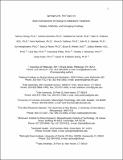| dc.contributor.author | Chung, Tammy | |
| dc.contributor.author | Noronha, Antonio | |
| dc.contributor.author | Carroll, Kathleen M. | |
| dc.contributor.author | Potenza, Marc N. | |
| dc.contributor.author | Hutchison, Kent | |
| dc.contributor.author | Calhoun, Vince D. | |
| dc.contributor.author | Gabrieli, John D. E. | |
| dc.contributor.author | Morgenstern, Jon | |
| dc.contributor.author | Nixon, Sara Jo | |
| dc.contributor.author | Wexler, Bruce E. | |
| dc.contributor.author | Brewer, Judson | |
| dc.contributor.author | Ray, Lara | |
| dc.contributor.author | Filbey, Francesca | |
| dc.contributor.author | Strauman, Timothy J. | |
| dc.contributor.author | Kober, Hedy | |
| dc.contributor.author | Ewing, Sarah W. Feldstein | |
| dc.date.accessioned | 2016-10-06T20:44:15Z | |
| dc.date.available | 2017-06-19T21:40:54Z | |
| dc.date.issued | 2016-07 | |
| dc.identifier.issn | 2196-2952 | |
| dc.identifier.uri | http://hdl.handle.net/1721.1/104660 | |
| dc.description.abstract | Purpose of review
Increased understanding of “how” and “for whom” treatment works at the level of the brain has potential to transform addiction treatment through the development of innovative neuroscience-informed interventions. The 2015 Science of Change meeting bridged the fields of neuroscience and psychotherapy research to identify brain mechanisms of behavior change that are “common” across therapies and “specific” to distinct behavioral interventions.
Recent findings
Conceptual models of brain mechanisms underlying cognitive behavioral therapy, mindfulness interventions, and motivational interviewing differ in targeting brain circuits representing “top-down” cognitive control and “bottom-up” processing of reward. Methods for integrating neuroimaging into psychotherapy research can reveal recovery of brain functioning with sustained abstinence, which may be facilitated by psychotherapy and cognitive training.
Summary
Neuroimaging provides powerful tools for determining brain mechanisms underlying treatment effects, predicting and monitoring outcomes, developing novel neuroscience-informed interventions, and identifying for whom an intervention will be effective. | en_US |
| dc.publisher | Springer International Publishing | en_US |
| dc.relation.isversionof | http://dx.doi.org/10.1007/s40429-016-0113-z | en_US |
| dc.rights | Creative Commons Attribution-Noncommercial-Share Alike | en_US |
| dc.rights.uri | http://creativecommons.org/licenses/by-nc-sa/4.0/ | en_US |
| dc.source | Springer International Publishing | en_US |
| dc.title | Brain Mechanisms of Change in Addiction Treatment: Models, Methods, and Emerging Findings | en_US |
| dc.type | Article | en_US |
| dc.identifier.citation | Chung, Tammy et al. “Brain Mechanisms of Change in Addiction Treatment: Models, Methods, and Emerging Findings.” Current Addiction Reports 3.3 (2016): 332–342. | en_US |
| dc.contributor.department | McGovern Institute for Brain Research at MIT | en_US |
| dc.contributor.mitauthor | Gabrieli, John D. E. | |
| dc.relation.journal | Current Addiction Reports | en_US |
| dc.eprint.version | Author's final manuscript | en_US |
| dc.type.uri | http://purl.org/eprint/type/JournalArticle | en_US |
| eprint.status | http://purl.org/eprint/status/PeerReviewed | en_US |
| dc.date.updated | 2016-09-01T11:52:18Z | |
| dc.language.rfc3066 | en | |
| dc.rights.holder | Springer International Publishing AG | |
| dspace.orderedauthors | Chung, Tammy; Noronha, Antonio; Carroll, Kathleen M.; Potenza, Marc N.; Hutchison, Kent; Calhoun, Vince D.; Gabrieli, John D. E.; Morgenstern, Jon; Nixon, Sara Jo; Wexler, Bruce E.; Brewer, Judson; Ray, Lara; Filbey, Francesca; Strauman, Timothy J.; Kober, Hedy; Ewing, Sarah W. Feldstein | en_US |
| dspace.embargo.terms | N | en |
| dc.identifier.orcid | https://orcid.org/0000-0003-1158-5692 | |
| mit.license | OPEN_ACCESS_POLICY | en_US |
